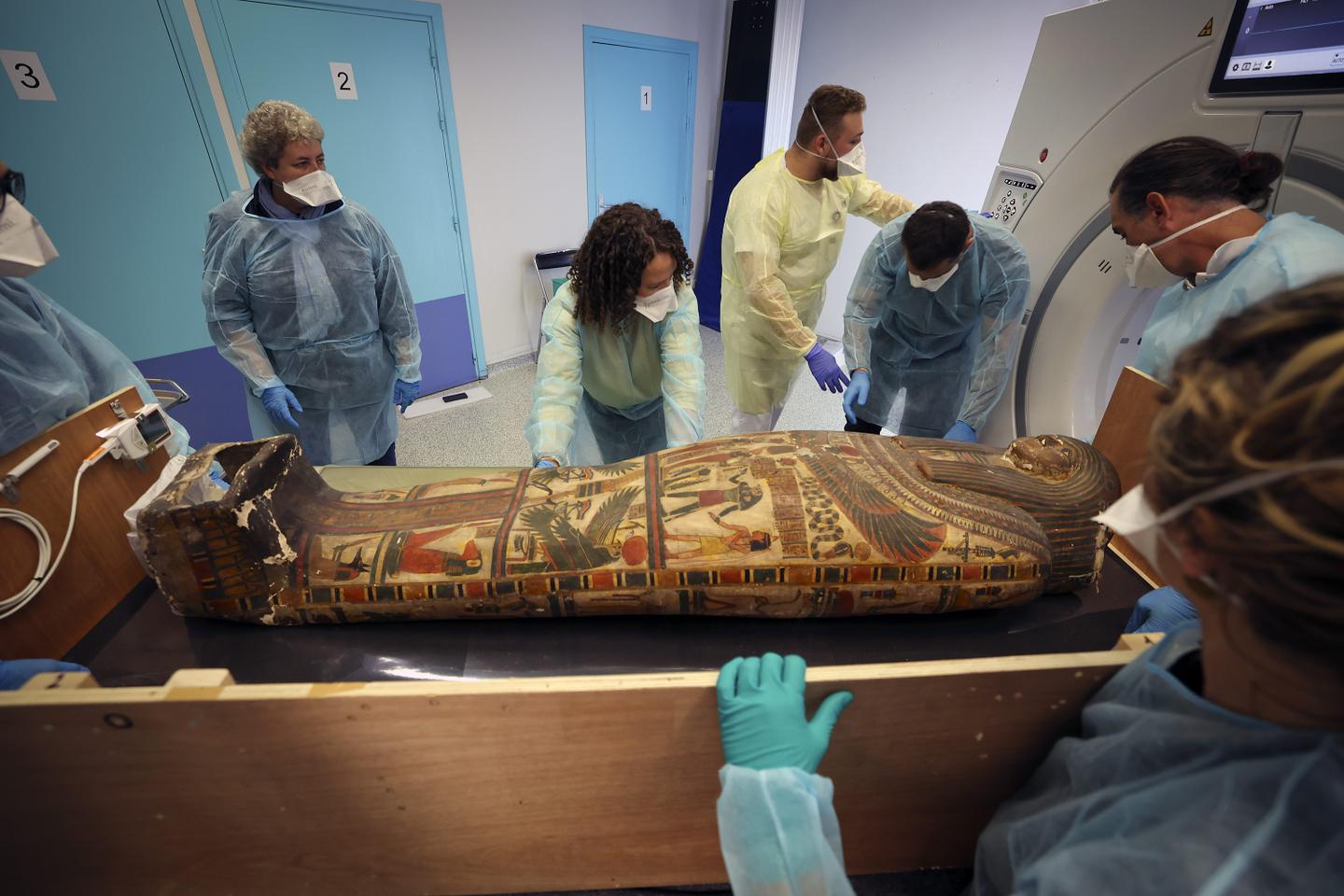


On the late afternoon of Monday, September 23, a rather unusual patient was lying on the table at the hospital in Lens (Pas-de-Calais, northern France), about to undergo an X-ray scan. On the other side of the glass in the image acquisition room, an unusual crowd of film crews, journalists, and hospital staff gathered – as if at a show – to observe the forthcoming examination. On one of the computer screens where the images of this three-dimensional X-ray would appear, a name could be seen. Djedmoutiouefankh Neha. But Neha remained invisible.
This Egyptian, who lived almost 3,000 years ago, is not only wrapped in linen bandages, but his mummy is also enclosed in a funerary cartonnage, a kind of painted anthropomorphic box. Only his feet, wrapped in cloth in good condition, are visible, as – in addition to a hole in this part of the cartonnage – the base is missing.
Neha belongs to the Louvre's collection of Egyptian mummies and usually resides a few kilometers away in the huge conservation center that the museum has inaugurated in Liévin (Pas-de-Calais) in 2019. This is the first time one of its mummies has been scanned. "We're not equipped for this," explained Hélène Guichard, general curator at the Louvre's Department of Egyptian Antiquities. Hence the idea of signing an agreement with the Centre Hospitalier de Lens to benefit from their medical scanner.
Because nowadays, mummies are no longer opened. "In the 19th century," recalled the Egyptologist, "people didn’t hesitate to open coffins and cartonnages, to unwrap the mummies and recover amulets and jewelry. Many cartonnages lost their owners because the mummies were often destroyed. We don’t do that anymore. Today, non-destructive medical investigation techniques allow us to gather information without even seeing the mummy."
Shown in loincloth
What do we know about Neha? Not much, to be honest, admitted Hélène Guichard. "The mummy is part of what we, at the Louvre, call the 'old collection'; but we don't know when or under what circumstances it arrived there, probably in the 19th century." So we have to rely on what the cartonnage tells us. Contrary to appearances, this "shell" is not made of wood, but of multiple layers of linen fabric glued together. As it dries, this lining hardens, but remains flexible enough to allow the mummy to be slipped in from behind, through a sewn opening closed by a cord.
The central scene painted on the cartonnage shows "the fateful moment when the deceased is led by the god Horus before the lord of the dead, the god Osiris, behind whom stand his two sisters, Isis and Nephthys," explained Guichard. "To find out whether or not he has been admitted into eternity." Neha is depicted in a loincloth, wearing a linen tunic so fine that it is transparent.
You have 58.14% of this article left to read. The rest is for subscribers only.
